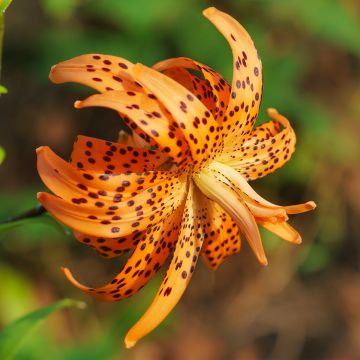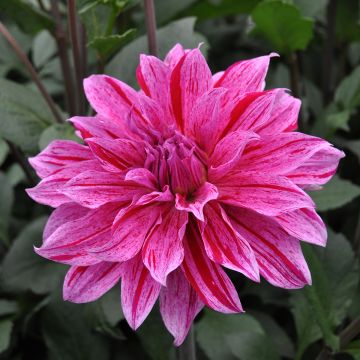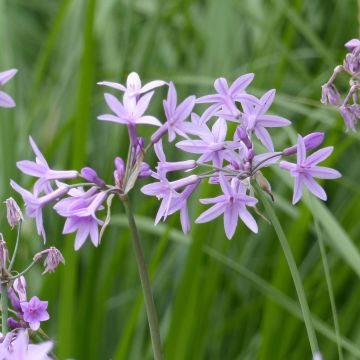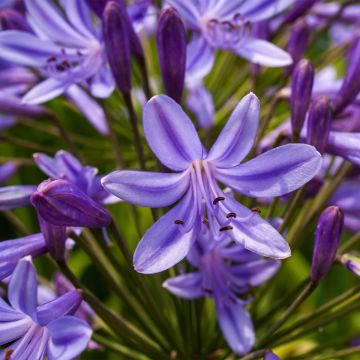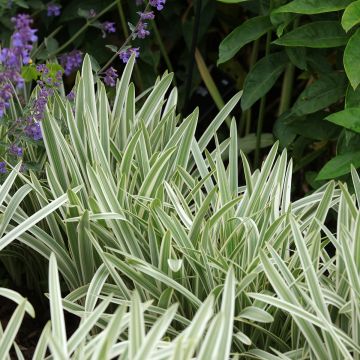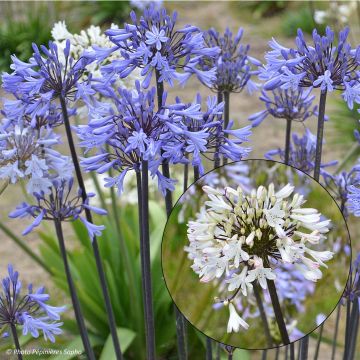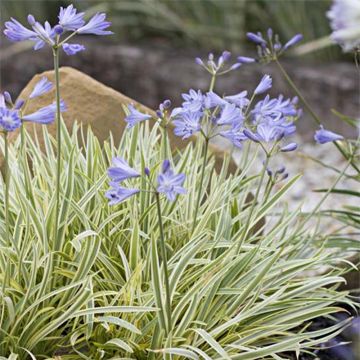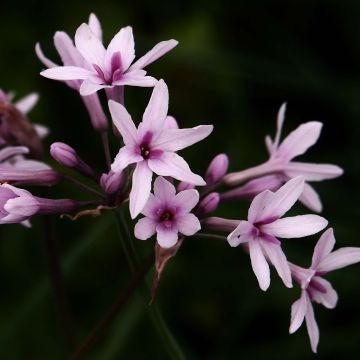

Sparaxis tricolour Mix
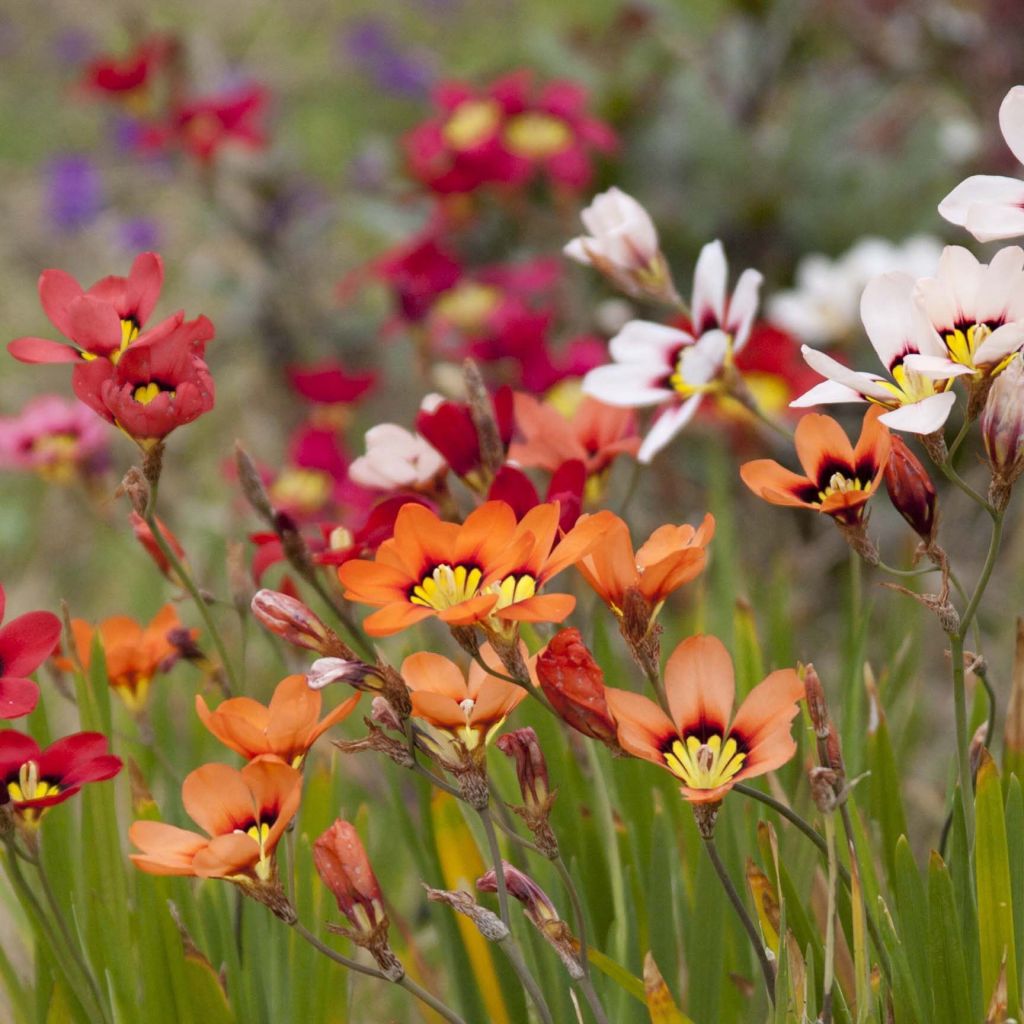

Sparaxis tricolour Mix
Sparaxis tricolour Mix
Sparaxis tricolor Mix
Harlequin flower, Fluweeltjie, Wandflower
None of the bulbs from my first order bloomed. I didn't have any more success with my second order.
MC , 08/10/2024
This item cannot be shipped to the selected country
Delivery charge from €5.90
More information
Schedule delivery date,
and select date in basket
This plant carries a 6 months recovery warranty
More information
We guarantee the quality of our plants for a full growing cycle, and will replace at our expense any plant that fails to recover under normal climatic and planting conditions.
From €5.90 for pickup delivery and €6.90 for home delivery
Express home delivery from €8.90.
Does this plant fit my garden?
Set up your Plantfit profile →
Description
Sparaxis tricolor Mix gathers several varieties of harlequin flowers. It is a South African botanical species. Depending on the cultivation method, flowering occurs in spring or summer. Each plant offers alternate tricoloured star-shaped corollas displaying a range of colours in different combinations of orange, red to pink, or yellow to white, around a yellow heart circled by black. These are semi-hardy perennial plants with corms. They are easy to grow and sometimes naturalise in mild climates, in sunny and light moist soil. They are superb in flowering pots or planted densely in flower beds, rockeries, or in a flowered lawn. Their flowers are very long-lasting in bouquets.
Sparaxis are deciduous perennial plants with corms, originating from rocky slopes in South Africa, more precisely from regions with rainy winters and dry summers. In nature, the tricolour species has winter vegetation and rests in summer in dry soil. Sparaxis are close relatives of gladioli, ixia, and garden irises. They belong to the large Iridaceae family.
In this mix, the flowers come in a range of colours, but all have a black or dark red ring encircling their yellow heart. Planted in autumn in mild climates, this cormous plant flowers in spring, while planting in spring in colder and more humid regions results in summer flowering. In this latter case, the plants should be cultivated like gladioli or overwintered in a greenhouse.
Sparaxis tricolor first forms a tuft 25 to 30cm (10 to 12in) in height, composed of long and slender light green leaves with parallel veins. They are alternate and sword-shaped, resembling iris leaves. Its growth rate is rapid. The deciduous foliage disappears a few weeks after flowering, but persists in winter in mild climates. The thin and rigid flower stalks average 40cm (16in) in height. They emerge between two fan-shaped leaves, from March to July, depending on the cultivation method and climate. In mild climates, it flowers in March-April, and the plant enters dormancy in summer. The flowering takes the form of clusters of 3 to 5 star-shaped cup flowers, with a tubular corolla formed by 6 fused petals. They open in the sun and close in the evening or under grey skies. The corm is semi-hardy, resistant to short frosts of around -5°C (23°F).
In mild climates, Sparaxis tricolour thrives in rockeries, lawns, borders, or very sunny flower beds with well-draining soil where they can easily naturalise. They need soil that remains moist during their growth and flowering period, but dries out during their dormant period. These plants pair well with botanical or early tulips, violets, hyacinths, and crocuses. In rockeries, they bring a radiant note, in the company of catmints, stipa, and pennisetums. Harlequin flowers also make remarkable edging plants, alone or with muscari and ipheion, for example. They are also perfect for garden beds and pots. Growing in containers lets you enjoy their brilliant flowering up close. You can then protect the plants from severe frosts by storing them away.
Report an error about the product description
Sparaxis tricolour Mix in pictures
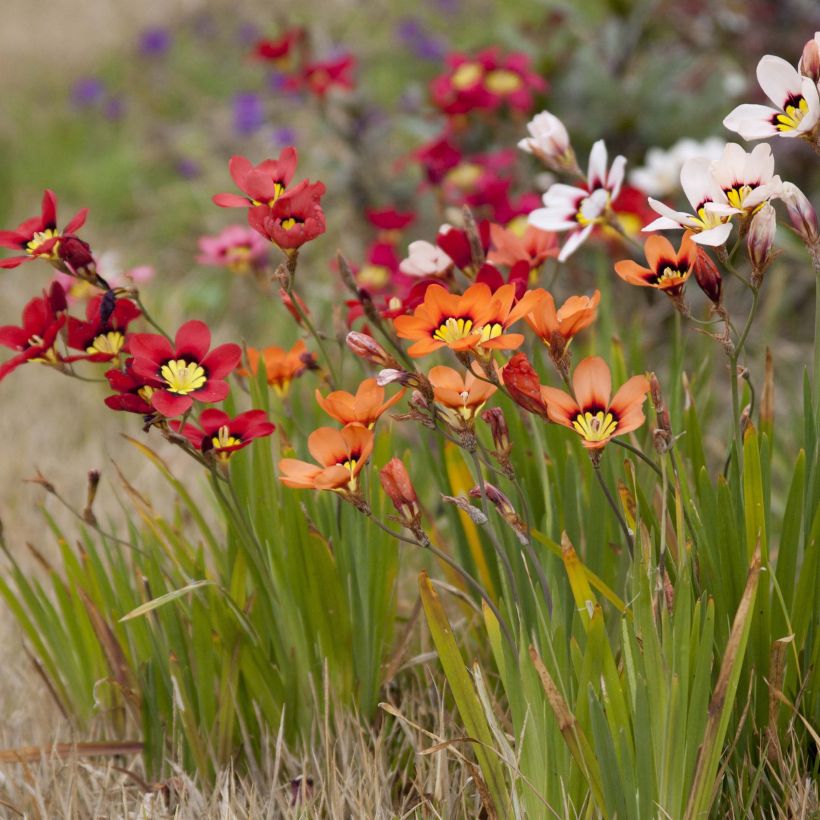





Plant habit
Flowering
Foliage
Botanical data
Sparaxis
tricolor
Mix
Iridaceae
Harlequin flower, Fluweeltjie, Wandflower
South Africa
Other Summer bulbs A to Z
Planting and care
Plant Sparaxis bulbs in groups of 8 or 10, spaced in a staggered pattern, in a mixture of sand, leaf compost, and ordinary soil. The substrate should be permeable, lightweight, and fertile. It should remain moist throughout the growth and flowering period, and then dry when the bulb enters dormancy. Planting in the ground in autumn is only possible in regions with mild winters, in a sheltered location where the temperature will not drop below -5°C (23°F). For pot planting, use the same substrate, adding crushed horn to support flowering. Place the pots in a frost-free area. As soon as the shoots appear, place the pots in a bright and lightly heated room. Once the risk of frost has passed, move your containers outside, in the sun. In the early summer heat, water more abundantly to support flowering. After flowering, when the leaves dry out, the bulbs should be kept dry.
Planting period
Intended location
Care
-
, onOrder confirmed
Reply from on Promesse de fleurs
Bulbs to grow in pots
Haven't found what you were looking for?
Hardiness is the lowest winter temperature a plant can endure without suffering serious damage or even dying. However, hardiness is affected by location (a sheltered area, such as a patio), protection (winter cover) and soil type (hardiness is improved by well-drained soil).

Photo Sharing Terms & Conditions
In order to encourage gardeners to interact and share their experiences, Promesse de fleurs offers various media enabling content to be uploaded onto its Site - in particular via the ‘Photo sharing’ module.
The User agrees to refrain from:
- Posting any content that is illegal, prejudicial, insulting, racist, inciteful to hatred, revisionist, contrary to public decency, that infringes on privacy or on the privacy rights of third parties, in particular the publicity rights of persons and goods, intellectual property rights, or the right to privacy.
- Submitting content on behalf of a third party;
- Impersonate the identity of a third party and/or publish any personal information about a third party;
In general, the User undertakes to refrain from any unethical behaviour.
All Content (in particular text, comments, files, images, photos, videos, creative works, etc.), which may be subject to property or intellectual property rights, image or other private rights, shall remain the property of the User, subject to the limited rights granted by the terms of the licence granted by Promesse de fleurs as stated below. Users are at liberty to publish or not to publish such Content on the Site, notably via the ‘Photo Sharing’ facility, and accept that this Content shall be made public and freely accessible, notably on the Internet.
Users further acknowledge, undertake to have ,and guarantee that they hold all necessary rights and permissions to publish such material on the Site, in particular with regard to the legislation in force pertaining to any privacy, property, intellectual property, image, or contractual rights, or rights of any other nature. By publishing such Content on the Site, Users acknowledge accepting full liability as publishers of the Content within the meaning of the law, and grant Promesse de fleurs, free of charge, an inclusive, worldwide licence for the said Content for the entire duration of its publication, including all reproduction, representation, up/downloading, displaying, performing, transmission, and storage rights.
Users also grant permission for their name to be linked to the Content and accept that this link may not always be made available.
By engaging in posting material, Users consent to their Content becoming automatically accessible on the Internet, in particular on other sites and/or blogs and/or web pages of the Promesse de fleurs site, including in particular social pages and the Promesse de fleurs catalogue.
Users may secure the removal of entrusted content free of charge by issuing a simple request via our contact form.
The flowering period indicated on our website applies to countries and regions located in USDA zone 8 (France, the United Kingdom, Ireland, the Netherlands, etc.)
It will vary according to where you live:
- In zones 9 to 10 (Italy, Spain, Greece, etc.), flowering will occur about 2 to 4 weeks earlier.
- In zones 6 to 7 (Germany, Poland, Slovenia, and lower mountainous regions), flowering will be delayed by 2 to 3 weeks.
- In zone 5 (Central Europe, Scandinavia), blooming will be delayed by 3 to 5 weeks.
In temperate climates, pruning of spring-flowering shrubs (forsythia, spireas, etc.) should be done just after flowering.
Pruning of summer-flowering shrubs (Indian Lilac, Perovskia, etc.) can be done in winter or spring.
In cold regions as well as with frost-sensitive plants, avoid pruning too early when severe frosts may still occur.
The planting period indicated on our website applies to countries and regions located in USDA zone 8 (France, United Kingdom, Ireland, Netherlands).
It will vary according to where you live:
- In Mediterranean zones (Marseille, Madrid, Milan, etc.), autumn and winter are the best planting periods.
- In continental zones (Strasbourg, Munich, Vienna, etc.), delay planting by 2 to 3 weeks in spring and bring it forward by 2 to 4 weeks in autumn.
- In mountainous regions (the Alps, Pyrenees, Carpathians, etc.), it is best to plant in late spring (May-June) or late summer (August-September).
The harvesting period indicated on our website applies to countries and regions in USDA zone 8 (France, England, Ireland, the Netherlands).
In colder areas (Scandinavia, Poland, Austria...) fruit and vegetable harvests are likely to be delayed by 3-4 weeks.
In warmer areas (Italy, Spain, Greece, etc.), harvesting will probably take place earlier, depending on weather conditions.
The sowing periods indicated on our website apply to countries and regions within USDA Zone 8 (France, UK, Ireland, Netherlands).
In colder areas (Scandinavia, Poland, Austria...), delay any outdoor sowing by 3-4 weeks, or sow under glass.
In warmer climes (Italy, Spain, Greece, etc.), bring outdoor sowing forward by a few weeks.




































